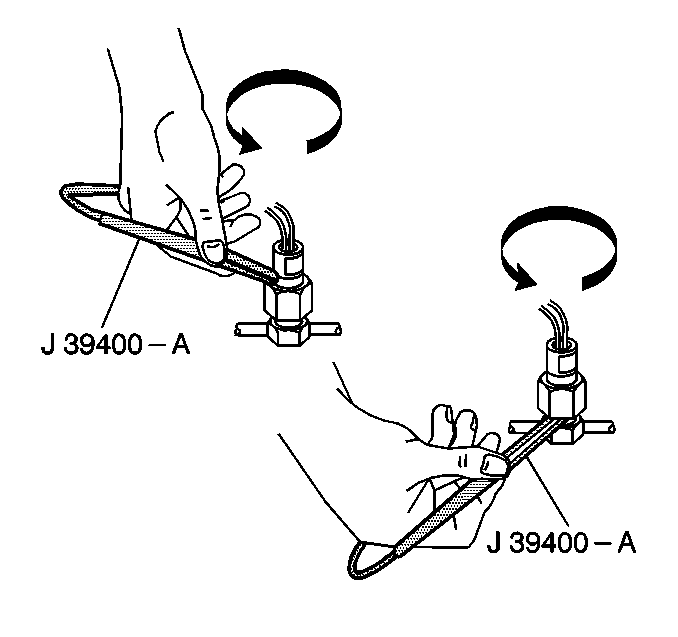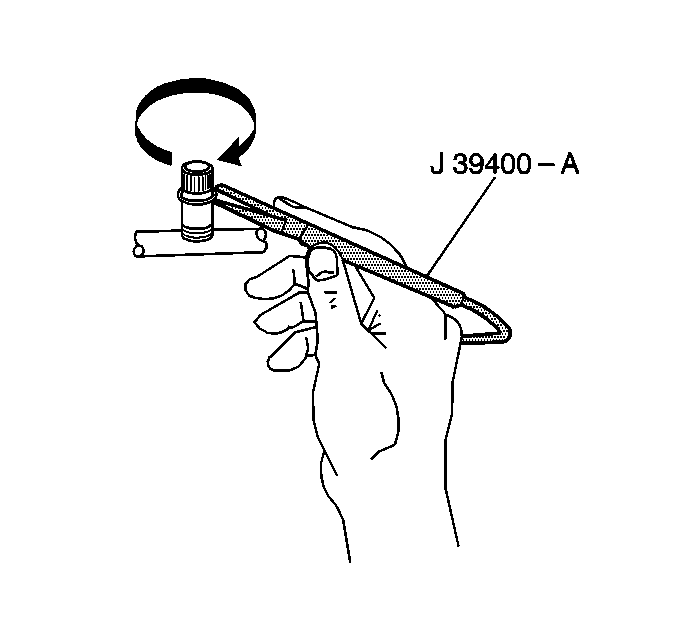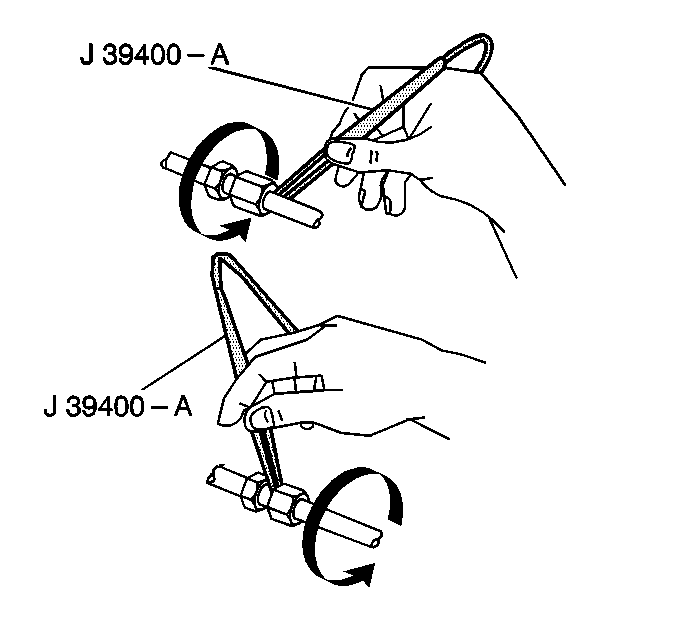A refrigerant leak test should be performed on the system whenever a leak is suspected due to system indication of low charge or after any service operation which disturbs the components, lines, or connections. Many methods and special tools are available for this purpose; however, no matter which tool is used, care and diligence are the biggest keys to success.
Electronic Leak Detection Method
Tools Required
J 39400 Halogen Leak Detector
Use the electronic leak detector when inspecting for refrigeration system leaks. This unit operates on a 12 volt DC. The leak detector provides an audible signal which increases in frequency when a refrigerant leak is detected. Properly calibrate the tool. Use the tool at the proper setting for the system that you are testing. The electronic leak detector has the following three settings:
| • | R-12 |
| • | R-134a |
| • | Gross leaks |
| This setting isolates very large leaks that are found at one of the other settings |
The halogen leak detectors are sensitive to windshield washing solution, many solvents and cleaners, and some adhesives. Work on a clean and dry surface. Complete the following actions when you test the joints:
| • | Completely circle each joint. |
| • | Move the tool 25-50 mm (1-2 inch) per second. |
| • | Ensure that the tip of the probe is no more than 6 mm (0.25 inch) from the surface. |
You may use this detector in order to inspect the following joints:
- Refrigerant pressure sensor.
- Service valves.
- Evaporator inlet/outlet.
- Accumulator dryer inlet/outlet.
- Compressor rear head.
- Compressor housing joints.
- A leak is indicated when the audible tone goes from a steady 1-2 clicks per second to a solid alarm. Adjust the balance knob frequently in order to maintain the 1-2 clicks per second.



If a leak is not found, proceed to the Refrigerant Leak Diagnosis table:
Refrigerant Leak Diagnosis
Step | Action | Value(s) | Yes | No |
|---|---|---|---|---|
DEFINITION: Inspecting the refrigeration system for leaks. | ||||
1 |
Has the leak stopped? | -- | System OK | |
2 |
Has the leak stopped? | -- | System OK | |
3 |
Has the leak stopped? | -- | System OK | |
4 |
Is the alarm solid? | -- | ||
5 | Repair the leak as needed. Has the leak stopped? | -- | System OK | |
6 |
Is the alarm solid? | -- | System OK | |
7 | Repair the leak as needed. Has the leak stopped? | -- | System OK | -- |
Florescent Leak Detection Method
Tools Required
| • | J 41447 Tracer Dye |
| • | J 41436-1 Tracer Dye Injector |
| • | J 28428-E High Intensity Black Light |
The R-134a refrigerant is uniquely different from the R-12 used in the past and may require additional methods for leak detection. The R-134a molecule is smaller than the R-12 molecule and can leak through smaller openings. R-134a also does not contain chlorine, which is easily detected using the black light. The efflorescence leak detection method is meant to be used in conjunction with the electronic method, and will pinpoint smaller leaks. The R-134a takes time to work. Depending on the rate of the leak, the dye may take up to 7 days to become visible.
Liquid Leak Detection/Pressure Testing Methods
Due to their lack of sensitivity and restricted visibility in today's refrigerant systems, liquid/bubble leak detectors have very limited usefulness. Therefore, the liquid leak detection/pressure testing methods are not recommended for this vehicle.
Service Port Seal/Cap
The primary seal for the service ports is the sealing cap. The cap contains a specially designed O-ring or gasket which provides a leak free seal. Should the cap be loose, missing, or the wrong usage, a loss of refrigerant could result.
